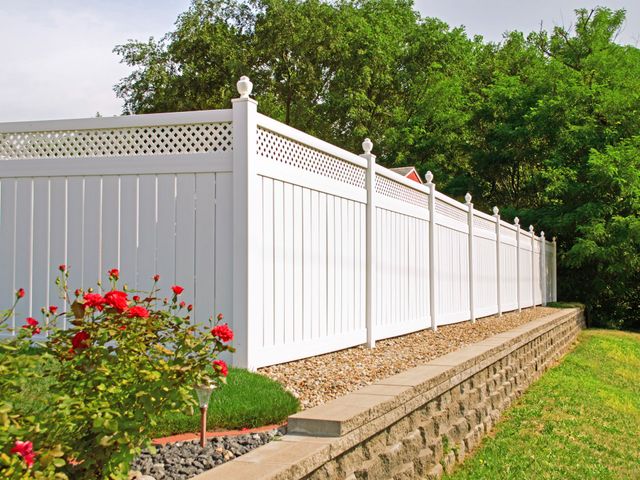How to Get Federal Housing Repair Help in 2025 homeownership is a dream for many, but maintaining a home can become an overwhelming responsibility, especially when the unexpected happens. Whether it’s a leaky roof, broken plumbing, or a failing HVAC system, the costs of home repairs can add up quickly. Fortunately, there is good news for homeowners in need of assistance: Federal housing repair help is available. In 2025, the federal government continues to support homeowners through a variety of programs aimed at alleviating the financial burden of essential repairs. If you’re wondering how to access this help, keep reading to discover the steps, requirements, and benefits of these programs.

What Is Federal Housing Repair Help?
At its core, Federal housing repair help refers to financial assistance and resources provided by the U.S. government to aid homeowners in fixing and maintaining their homes. These programs are particularly designed for low-to-moderate-income individuals and families who may not have the financial means to cover significant home repairs. From grants to low-interest loans, federal programs offer multiple avenues for support.
This assistance can cover a wide range of repair needs, including structural issues, electrical systems, plumbing problems, heating and cooling systems, and much more. The primary goal of Federal housing repair help is to ensure that individuals can live safely in their homes without the fear of costly repairs piling up and causing potential health and safety risks.
Who Is Eligible for Federal Housing Repair Help?
Eligibility for Federal housing repair help can vary depending on the specific program and the applicant’s situation. However, most programs focus on low-to-moderate-income homeowners, elderly citizens, veterans, and individuals with disabilities. To qualify for Federal housing repair help, applicants generally need to meet several criteria, including:
- Income: Most programs have income limits, ensuring that help is directed to those who truly need it.
- Homeownership Status: The homeowner must occupy the property as their primary residence.
- Age or Disability: Certain programs prioritize seniors over 62 or people with disabilities.
- Need for Repairs: The home must have conditions that pose a health or safety risk, such as damaged roofs, plumbing failures, or faulty wiring.
Federal Programs Offering Housing Repair Help
Several federal programs are designed to provide financial assistance for home repairs. These programs have specific guidelines and processes to ensure homeowners can access the help they need. Below are some of the most prominent federal programs offering Federal housing repair help in 2025.
1. The USDA Rural Development Housing Repair Loans and Grants
The U.S. Department of Agriculture (USDA) offers the Housing Repair Loan and Grant Program, which is ideal for homeowners living in rural areas. This program provides loans and grants to qualified homeowners for essential repairs.
Key features:
- Loans of up to $20,000 for home repairs with interest rates as low as 1%.
- Grants for seniors over the age of 62 who cannot repay loans, with up to $7,500 in assistance.
- Eligible repairs can include structural, electrical, plumbing, and roofing work.
To apply for this program, homeowners must meet the USDA’s income and rural residence requirements, and the home must be in need of critical repairs to address health and safety concerns.
2. The FHA Title 1 Property Improvement Loan Program
The Federal Housing Administration (FHA) offers a loan program called the Title 1 Property Improvement Loan Program. This program allows homeowners to take out a loan to finance repairs, improvements, or modernization projects for their homes. It’s ideal for homeowners who may not qualify for traditional financing due to low credit scores or limited income.
Key features:
- Loans of up to $25,000 for single-family homes.
- Available for both owner-occupied and rental properties.
- Flexible terms and repayment options.
While this is a loan, it is one of the most accessible federal programs for homeowners who need financial assistance for home repairs but may not have a large amount of equity in their home.
3. The Section 504 Home Repair Program
Another vital program from the USDA is the Section 504 Home Repair Program, which offers loans and grants to very-low-income homeowners in rural areas. This program focuses on helping homeowners over the age of 62 or those who have disabilities to repair their homes.
Key features:
- Loans up to $20,000 with a 1% interest rate and repayment term of 20 years.
- Grants up to $7,500 for homeowners who are 62 or older, and cannot repay the loan.
- Use of funds can include repair or replacement of heating systems, plumbing, electrical systems, and even improvements that improve home accessibility for those with disabilities.
The Section 504 Home Repair Program is especially beneficial for seniors, as it provides a combination of loan and grant options depending on the applicant’s ability to repay.
4. The LIHEAP Weatherization Program
The Low-Income Home Energy Assistance Program (LIHEAP) provides federal funds to help low-income homeowners and renters pay for heating and cooling costs. While primarily focused on energy bills, the LIHEAP Weatherization Program offers assistance with home repairs that improve energy efficiency, such as insulation, window repairs, and furnace maintenance.
Key features:
- Helps reduce energy costs through weatherization of homes.
- Services may include the installation of weather stripping, insulation, energy-efficient windows, and HVAC system repairs.
- Available to low-income individuals and families who meet certain eligibility requirements.
While not strictly for general home repairs, the weatherization services provided under LIHEAP are critical for homeowners struggling with energy costs.
5. Veterans Affairs (VA) Home Repair Assistance
Veterans are eligible for a variety of home repair assistance programs through the U.S. Department of Veterans Affairs (VA). These programs are specifically designed to help veterans make necessary home repairs, often related to their health and well-being. Some programs also assist with the construction of accessible living spaces for veterans with disabilities.
Key features:
- Financial assistance for home modifications and repairs to address specific needs such as mobility issues or medical equipment needs.
- Available to veterans with disabilities and those who require specialized living arrangements.
- VA grants are often used to fund adaptive modifications like ramps or wider doorways.
Veterans can access home repair help through several channels, including the Specially Adapted Housing (SAH) Grant or the Home Improvements and Structural Alterations (HISA) Grant.
How to Apply for Federal Housing Repair Help in 2025
Now that you have an understanding of the various programs offering Federal housing repair help, the next step is to apply. Each program has its own application process, and it’s crucial to follow the guidelines carefully to increase your chances of receiving assistance. Here are the basic steps to apply for federal housing repair assistance:
- Identify the Right Program: Start by determining which program is most appropriate for your situation. Research the eligibility criteria, the type of repairs covered, and the amount of financial assistance available.
- Gather Required Documents: Each program will require specific documentation to process your application. Common documents include proof of income, proof of homeownership, tax returns, and details about the repairs needed.
- Complete the Application: Visit the website of the program you are applying to and carefully fill out the application form. Some programs may also require you to provide detailed descriptions or estimates of the repairs.
- Submit Your Application: After completing the application, submit it through the appropriate channels. Some programs allow you to apply online, while others may require you to submit your application via mail or in person.
- Wait for Approval: After submission, the relevant agency will review your application and decide if you are eligible for assistance. This process may take several weeks to months depending on the program and funding availability.
- Begin the Repairs: Once approved, the funds will be allocated, and you can begin the necessary repairs. Be sure to follow all guidelines set forth by the program to ensure compliance.
What to Do If You Don’t Qualify for Federal Housing Repair Help
If you don’t qualify for Federal housing repair help, there are still options available. Many states and local governments offer additional assistance programs. You may also consider working with nonprofits and community organizations that provide home repair services at reduced costs or offer volunteer work to assist homeowners in need. Additionally, low-interest personal loans or home equity loans could provide the financial resources needed for repairs.
In 2025, there are numerous federal programs in place to help homeowners repair their homes, from small fixes to major renovations. Whether you are struggling with a leaking roof or need essential home modifications, Federal housing repair help can provide much-needed relief. By understanding the available programs, their eligibility requirements, and how to apply, you can take the necessary steps to get the assistance you need.
Don’t let home repairs overwhelm you—take advantage of the resources at your disposal and ensure that your home remains safe and comfortable for years to come.






